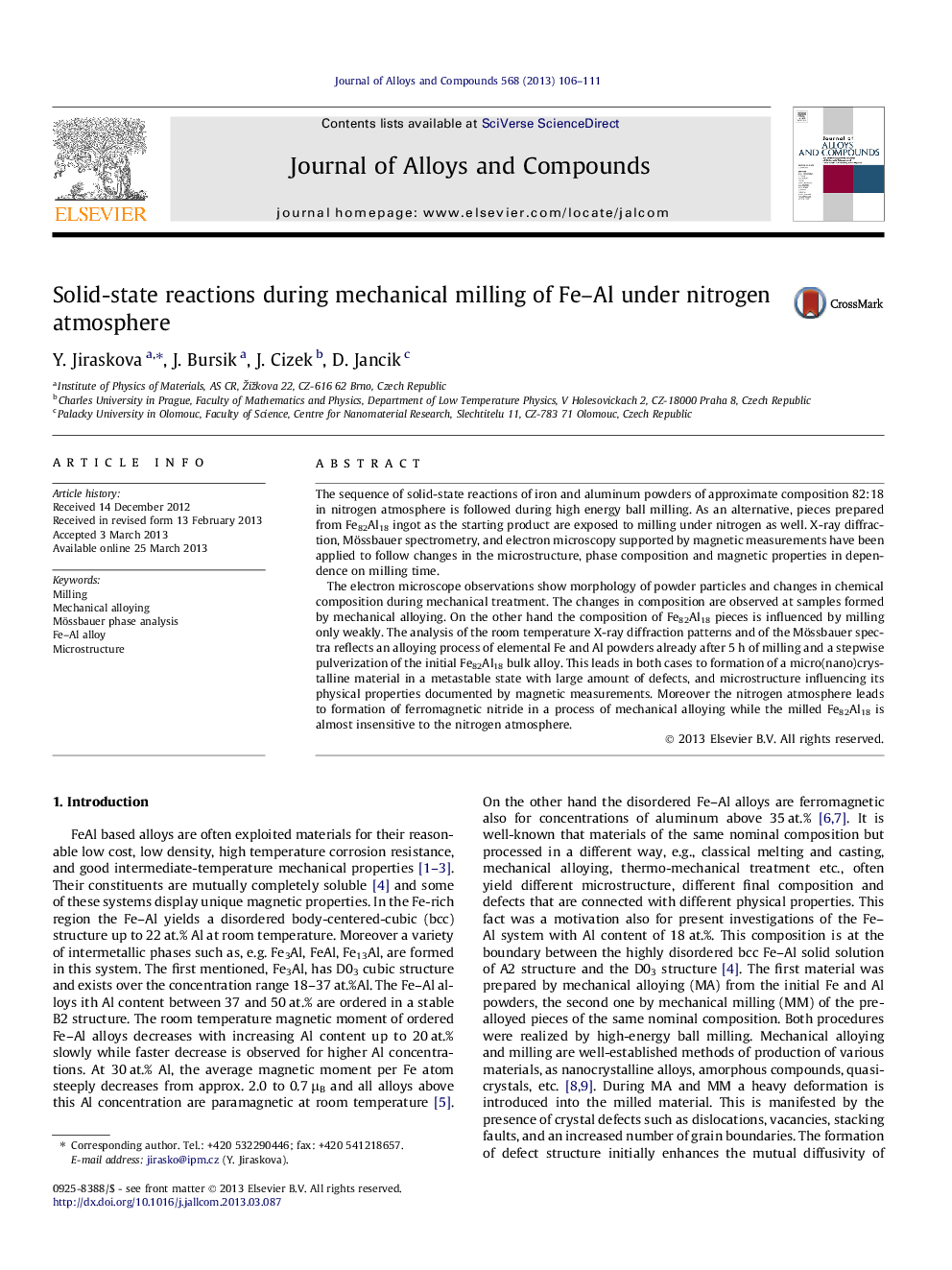| Article ID | Journal | Published Year | Pages | File Type |
|---|---|---|---|---|
| 1614121 | Journal of Alloys and Compounds | 2013 | 6 Pages |
•The mechanically alloyed and milled Fe–Al alloys under nitrogen were prepared.•Formation of iron nitride was achieved in the mechanically alloyed Fe–Al.•An influence of this nitride on magnetic hardening of final material is shown.
The sequence of solid-state reactions of iron and aluminum powders of approximate composition 82:18 in nitrogen atmosphere is followed during high energy ball milling. As an alternative, pieces prepared from Fe82Al18 ingot as the starting product are exposed to milling under nitrogen as well. X-ray diffraction, Mössbauer spectrometry, and electron microscopy supported by magnetic measurements have been applied to follow changes in the microstructure, phase composition and magnetic properties in dependence on milling time.The electron microscope observations show morphology of powder particles and changes in chemical composition during mechanical treatment. The changes in composition are observed at samples formed by mechanical alloying. On the other hand the composition of Fe82Al18 pieces is influenced by milling only weakly. The analysis of the room temperature X-ray diffraction patterns and of the Mössbauer spectra reflects an alloying process of elemental Fe and Al powders already after 5 h of milling and a stepwise pulverization of the initial Fe82Al18 bulk alloy. This leads in both cases to formation of a micro(nano)crystalline material in a metastable state with large amount of defects, and microstructure influencing its physical properties documented by magnetic measurements. Moreover the nitrogen atmosphere leads to formation of ferromagnetic nitride in a process of mechanical alloying while the milled Fe82Al18 is almost insensitive to the nitrogen atmosphere.
